Project completed May, 2011
Location: Eaton, NH
Owner: Inn at Crystal Lake
Engineer: Jones and Beach Engineers, Inc.
The Project involved the removal of an undersized Red Listed bridge and installation of a new precast arch span bridge. The existing bridge was only capable of handling 3 ton loads and unable to The Project required the installation of a specialized aeration septic system to minimize the size of the leach field. The site was small and hilly requiring the use of small equipment and unique approaches. The system required 3 septic tanks and a pump chamber. 2 of the tanks were 2,600 gallon tanks (one of these being the aeration tank) and 1 standard 3 compartment 5,500 gallon septic tank. To complete the project required an easement from the neighbor who also had their septic system combined into the project with a new standard tank and connected into the Inn’s leach field.
Until this project was completed the Inn was using a holding tank that required regular pumping. With the Inn being busiest in the Summer and Winter Months scheduling for the project required a late Fall early Winter work period. With the winter work conditions there was a need to utilize frost blankets and other methods to accomplish the project. The actual shutdown of the existing sewer and switch over to the new tanks was only 2 days in length to lessen the impact to the business.
Issue: Minimize the business disruption during construction.
Solution: Work was performed midweek during the off peak season. The actual length of the shut down of the existing system and start of the new system was less than 2 days. To minimize the disruption required working in less favorable conditions but in the end the client was happy.
Issue: Install a large (5,500 gallon) septic tank in a tight space with overhead wires, trees and structures all limiting crane access.
Solution: Through cooperation with the precast supplier (Michie Corporation) we were able order a tank in multiple sections and limit the weights so that a standard boom truck could handle the load. Along with this there was a need for additional site work to accommodate the access needed by the supplier’s truck.
-
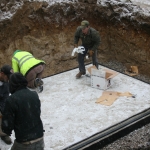
-
The floor of the 5,500 Gallon Tank in place
-

-
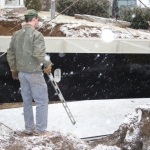
-
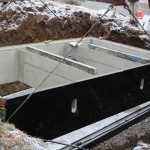
-
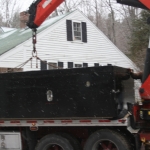
-

-
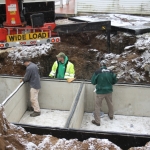
-
Installing mastic for prior to setting the Third section of a 5,500 Gallon Tank
-

-
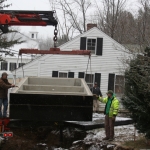
-
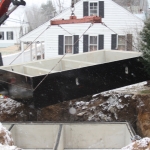
-
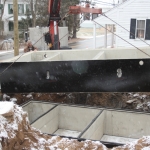
-
Setting the Third portion of a 5,500 Gallon Tank
-
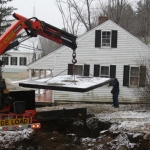
-
Swinging the top of the 5,500 Gallon Tank into position













